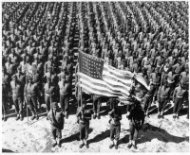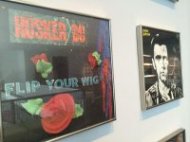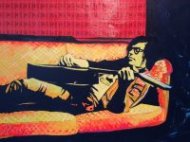African American Museum in New Orleans
 Phil McCausland| Special to The Advocate
Phil McCausland| Special to The Advocate
More than 1.1 million African-American service members contributed to the United States’ effort in World War II. But their sacrifices changed little about their treatment on the home front, according to an exhibit which opened Saturday at the National World War II Museum in New Orleans.
“Fighting for the Right to Fight: African American Experiences in World War II, ” chronicles the lives of African-Americans in the military from shortly after World War I to the beginnings of the Civil Rights Movement, examining all of the service branches and how black servicemen participated in each.
 The Independence Day launch was intentional.
The Independence Day launch was intentional.
“It’s an important day nationally, ” said curator Eric Rivet, who is in charge of the exhibit, “and it’s an important day to sit back and look both at how far we’ve come in the 70 years since World War II, and how we really do have a long way to go.”
Each branch of the military was required to take in African-Americans during the war, and some did so for the first time. The Marines had never had a black service member until 1942.
But throughout the war, African-Americans were more often assigned to logistical roles than combat.
“It was a vastly different experience, ” Rivet said. “You look at white soldiers: They joined the army and got a rifle. Most black soldiers joined the army and got a shovel.
 “White soldiers came home after the war as liberators. Black soldiers came home after the war, for the most part, as laborers.”
“White soldiers came home after the war as liberators. Black soldiers came home after the war, for the most part, as laborers.”
“Fighting for the Right to Fight” will remain at the museum for approximately 10 months, then spend two years traveling to other American cities.
The exhibit includes stories of unknown black heroes of the war, as well as more famous names such as Tuskegee commander Benjamin Davis Jr., entertainer Sammy Davis Jr., writer Alex Haley and civil rights activist Medgar Evers.
A centerpiece of the exhibit is particularly timely, as President Obama posthumously bestowed the Medal of Honor on two forgotten World War I soldiers in May.
Pvt. Henry Johnson, a black soldier, and Sgt. William Shemin, a Jewish soldier, received that honor.
“President Clinton ordered the military to go back and investigate, because it was just impossible that, out of more than 1 million black men and women who served in the military during World War II, not a single one of them did something worthy of the Medal of Honor, ” Rivet said. “Ultimately, the military retroactively awarded the medal to seven men who had all been in the Army during World War II.”
The museum will reunite the medals for the first time.
The exhibit also features an eight-minute documentary about the Tuskegee Airmen, narrated by Robin Roberts. The video includes footage from a film produced during the war about the airmen; that portion is narrated by then-actor Ronald Reagan.
You might also like








